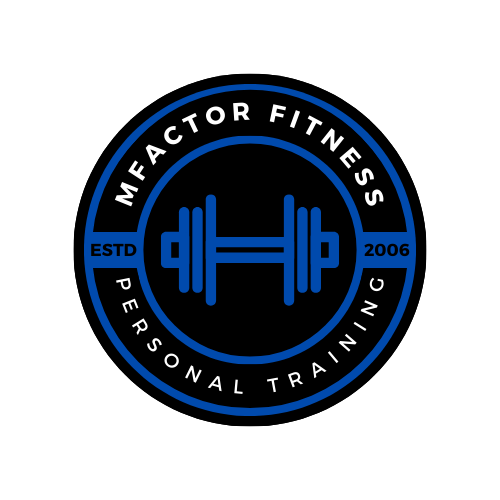How many calories should you be eating?
If you are not losing fat as fast as you would like or if you have trouble gaining muscle, then chances you are not eating enough. This is the number one issue I deal with as a trainer. Most people have an idea of what it means to eat “clean” but they also don’t really know how much they should be eating. So that is what we are going to tackle today.
Counting calories is a chore. There are a number of free apps you can put on your phone that can make this easier. I am thinking of My Fitness Pal and Calorie Counter as two that work well. I am not saying you will have to count every meal the rest of your life. I am saying it would be well worth your time to
1. Figure out how many calories you should be eating.
2. Record what you are eating until you get a feel for how many calories you are eating.
Make sense? Here is today’s math. REE + AEE= TEE
Resting energy expenditure plus activity energy expenditure = Total energy expenditure.
Resting energy expenditure is how many calories your body needs at rest. This is pretty easy to figure out.
Males: REE calories = 11 x body weight in pounds
Females: REE calories = 10 x body weight in pounds
Females: REE calories = 10 x body weight in pounds
So say you are a female and weight 180 pounds. 180*10 = 1800 calories.
This means you have to consume 1800 calories to maintain your current weight if all you did was sleep all day. No other activities.
Important Note: These formulas are just an estimate of calories. There are a number of different formulas but the idea is to give you a ballpark estimate of how much you should be eating.
Activity energy expenditure is how many additional calories you should be eating to maintain your weight. Find the Activity level below to find your AEE.
Activity level Male Female
Resting:
Sleeping, reclining 1.0 1.0
Sedentary:
Minimal movement, mainly sitting/lying
Activities include watching television and reading 1.3 1.3
Light:
Office work, sitting, day consists of sleeping 8 hrs
with 16 hrs of walking or standing
Activities include walking, laundry, golf, ping pong,
walking on level ground at 2.5-3 mph
*Usually includes 1 hr of moderate activity 1.6 1.5
Moderate:
Light manual labor
Activities include walking 3.5-4 mph, carrying a
load, cycling, tennis, dancing, weeding, and hoeing 1.7 1.6
Very active:
Full-time athletes, agricultural laborers, active
military duty, hard laborers (mine and steel workers)
Activities include walking with a load uphill, team
sports, climbing 2.1 1.9
Extremely active:
Lumberjacks, construction workers, coal miners,
some full-time athletes with daily strenuous training 2.4 2.2
Resting:
Sleeping, reclining 1.0 1.0
Sedentary:
Minimal movement, mainly sitting/lying
Activities include watching television and reading 1.3 1.3
Light:
Office work, sitting, day consists of sleeping 8 hrs
with 16 hrs of walking or standing
Activities include walking, laundry, golf, ping pong,
walking on level ground at 2.5-3 mph
*Usually includes 1 hr of moderate activity 1.6 1.5
Moderate:
Light manual labor
Activities include walking 3.5-4 mph, carrying a
load, cycling, tennis, dancing, weeding, and hoeing 1.7 1.6
Very active:
Full-time athletes, agricultural laborers, active
military duty, hard laborers (mine and steel workers)
Activities include walking with a load uphill, team
sports, climbing 2.1 1.9
Extremely active:
Lumberjacks, construction workers, coal miners,
some full-time athletes with daily strenuous training 2.4 2.2
So let’s say our test subject is sedentary. Her AEE would be 1.3.
1800 ( REE) x 1.3 ( AEE) = 2340 calories. ( TEE )
This may seem like a lot of calories to you but this is also the reason people have trouble losing fat. Their metabolism has been beaten down after years of low calorie dieting. This represents a normal metabolism.
So what do you do with this?
Well, to lose weight eat less than your TEE ( 2340 calories ) but more than your REE ( 1800 ).
It is really as simple as that. Eat less than 1800 calories and you are not providing your body with enough calories to perform all the functions it needs to. This will lead to a slowing of your metabolism to hoard calories.
Really this makes sense.
1. The more you weigh, the more calories your body needs each day.
2. The more active you are, the more calories your body needs.
The last key here to take in is please give your body calories it can use. The more nutrient dense the food you eat, the better you will feel.
I took the above info from a course I took called Winning Sports Nutrition form DSW fitness.
I hope this helps.
Michael
Visit me at http://www.mfactorfitness.com Michael Medvig is a personal trainer and owner of M Factor Fitness Inc., an in home personal training company in Parker Colorado. This blog represents opinions on fitness. Do your own research and draw your own conclusions. All information and materials on this site are provided as is and without warranty of any kind. These materials (including all text, images, logos, compilation, and design, unless otherwise noted) are copyright 2001-2010 M Factor Fitness Inc. All rights reserved. Copyright 2001-2010 M Factor Fitness Inc. All rights reserved. |
Share this:
- Click to share on Reddit (Opens in new window)
- Click to share on Pocket (Opens in new window)
- Click to share on Pinterest (Opens in new window)
- Click to share on Tumblr (Opens in new window)
- Click to share on Twitter (Opens in new window)
- Click to share on LinkedIn (Opens in new window)
- Click to share on Facebook (Opens in new window)
- Click to email a link to a friend (Opens in new window)
- Click to print (Opens in new window)

